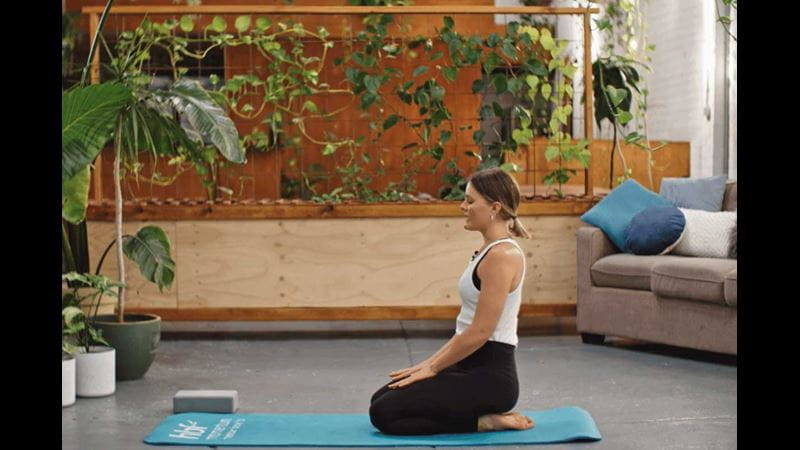Blog article
7 ways to reduce exercise-related injuries

With summer well on its way, you may be feeling the itch to get outdoors and restart your fitness routine.
However, if you’re diving back into exercise after bunkering down during the winter months, it's important to take steps to reduce injuries and ensure a safe, enjoyable experience.
We spoke with Managing Executive and Physiotherapist at HBF Physio Baldivis, Jordan Duncan, for his top 7 ways to prevent exercise-related injuries.
1. Warm up first
Even if you weren’t fond of your high school PE classes (compulsory hurdles anyone?) your teacher did get one thing right – warming up is important! “A good warm-up can make a big difference in how you feel during your workout and how well you perform,” Duncan explains.
Warming up also helps prevent injuries by loosening your joints and boosting blood flow to your muscles, which reduces the risk of strains, tears, or twists during your workout.1
Some simple and easy warm up exercises Duncan suggests include:
- Low-intensity aerobic exercise: Like brisk walking or jogging to get your heart rate up.
- Dynamic stretching: These are stretches that involve movement, such as lunges, as opposed to static stretches, where you hold a stretch in position.
- Mobility exercises: These are exercises that move your muscles and joints through a large range of motion. “This can help with stiffness in specific areas and reduce risk of injury,” Duncan says. “For example, you might try cat and cow stretch for lower back mobility.”
- Activity similar to the exercise you’re about to do: For example, you might do some bodyweight squats before using weights, or sports-specific drills before a game.
2. Cool down to finish
Once your workout is over, it’s important to cool down properly. Duncan recommends, “Spend a few minutes doing low-intensity aerobic exercise, like gentle jogging or walking, to help your heart rate and body temperature return to normal.”
Stopping exercising abruptly without a proper cool-down can lead to a build-up of toxic substances and lactic acid in your muscles. This can result in significant soreness and stiffness the following day, potentially limiting your movement and causing considerable pain.2
5 common ‘gym pings’ and how to prevent them
3. Stretch it out
“There’s still some debate about whether stretching prevents injury or reduces muscle soreness,” Duncan notes. “But stretching can definitely help ease that tight, stiff feeling in your muscles.”
Duncan recommends spend a few minutes stretching out each of the main muscle groups you’ve worked during your exercise session and enjoy the feeling of release. During the week in between exercise sessions, you could also try yoga to combine stretching and flowing movement with deep, relaxing breathing.
Yoga with Megan, brought to you by HBF
4. Refuel and rehydrate
Your body needs good nutrition and plenty of water to feel and perform at its best. This may help with reducing muscle soreness, injury, illness and fatigue, and with getting you ready for the next workout.3
After exercise, sports dietitians recommend focusing on:3
- Drinking lots of water to rehydrate.
- Eating carbohydrates to replenish your muscle fuel stores – think whole grain breads, brown rice, oats or muesli, and fruits and vegetables.
- Eating protein to promote muscle repair – like lean meats, fish, legumes, eggs, tofu or dairy products.
If you want more guidance, a dietitian can give you personalised advice to support your needs and goals. HBF extras cover can pay benefits towards this.
What should you eat before and after exercise?
5. Get a good sleep
“Rest and sleep may be the most overlooked aspect of reducing injury and aiding recovery,” Duncan says. “It’s well documented that a lack of restful sleep can lead to poorer performance outcomes and risk of injury.”
To get a better night’s rest, he suggests the following:
- Keep your bedroom dark, cool and quiet
- Avoid looking at your phone or other screens for 1-2 hours before bed
- Limit caffeine and big meals leading up to sleep
- Try relaxation techniques before bed and look for ways to reduce overall stress.
6. Try foam rolling or massage (if it feels good to you)
Duncan says there’s mixed evidence about how much using a foam roller or getting a massage really helps improve recovery after exercise. But for many people, it feels good – so that can make it a worthwhile part of your recovery routine.
The feel-good factor of reducing muscle tightness or pain can make foam rolling or massage worthwhile for some people,” Duncan says.
And of course, massage can also be relaxing, which is a good enough reason to indulge yourself if you enjoy it.
7. If anything doesn’t feel right, seek help
Some post-exercise soreness is normal, but don’t ignore persistent or severe pain. “If you’re experiencing significant discomfort or something feels off, it’s important to stop and consult a health professional,” Duncan advises.
Addressing potential injuries early can help prevent further issues and ensure a faster, more effective recovery.
How can health insurance help?
HBF extras insurance can include cover for a few services that may help keep you moving and feeling better, such as:
- Physiotherapy. From aches and pains to mobility issues and injuries, physio can help treat a wide range of physical conditions. (Learn more about physio cover.)
- Remedial massage. Recover with soft tissue manipulation that can help treat injuries or illness.
- Exercise physiology. Get support for managing, treating or preventing chronic illness or injury through exercise.
If you’re an HBF member, you can check what you're covered for by logging on to myHBF or calling us on 133 423.



